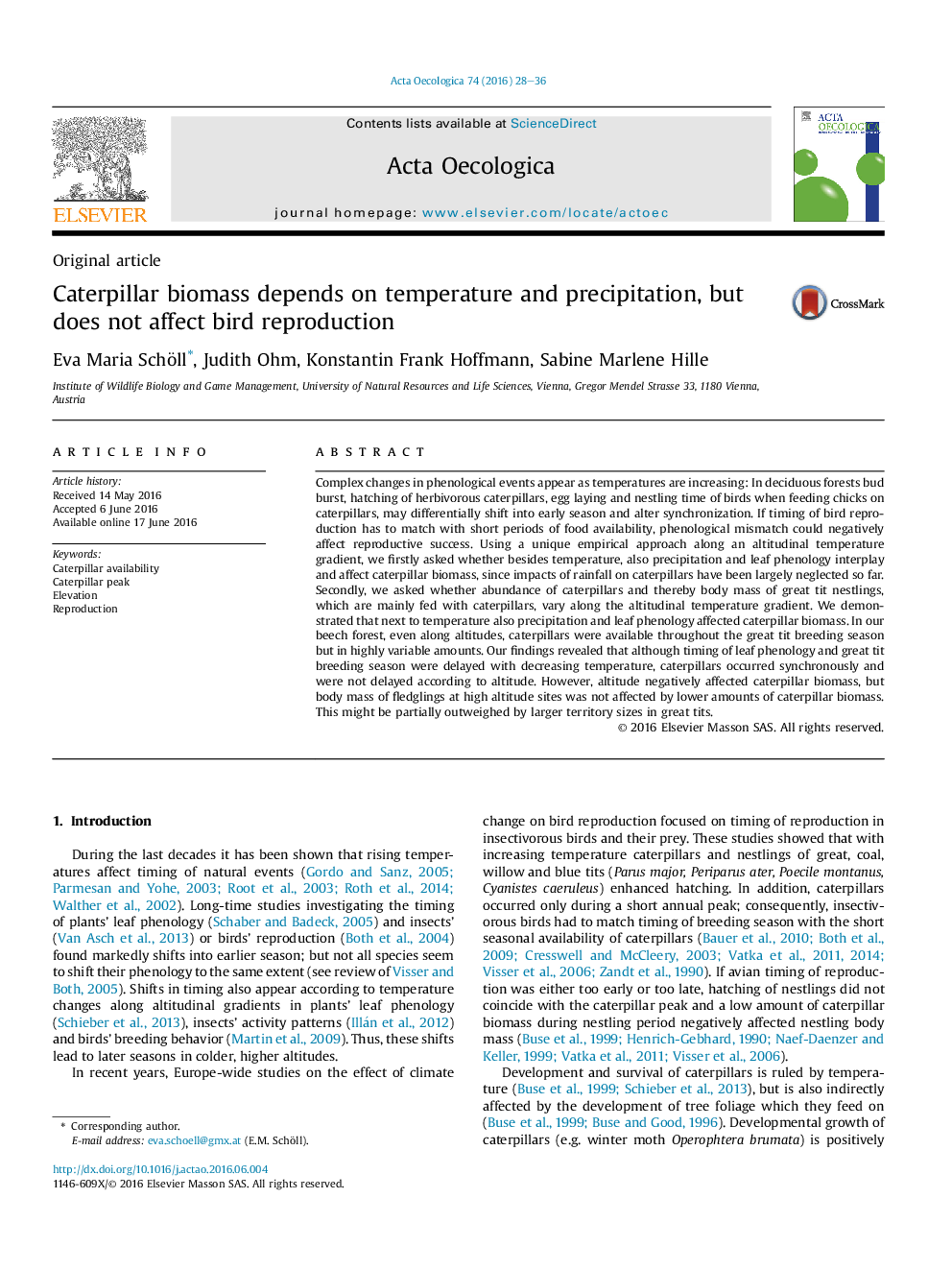| Article ID | Journal | Published Year | Pages | File Type |
|---|---|---|---|---|
| 4380690 | Acta Oecologica | 2016 | 9 Pages |
•Assumption of single caterpillar peak is not inevitably transferable to all forests.•Caterpillar biomass decreases along altitudinal temperature gradient.•Besides temperature, precipitation affects caterpillar biomass estimation.•Low food biomass does not affect great tit reproduction, but breeding density.•Altitudinal temperature gradients as superb field laboratory for ecological studies.
Complex changes in phenological events appear as temperatures are increasing: In deciduous forests bud burst, hatching of herbivorous caterpillars, egg laying and nestling time of birds when feeding chicks on caterpillars, may differentially shift into early season and alter synchronization. If timing of bird reproduction has to match with short periods of food availability, phenological mismatch could negatively affect reproductive success. Using a unique empirical approach along an altitudinal temperature gradient, we firstly asked whether besides temperature, also precipitation and leaf phenology interplay and affect caterpillar biomass, since impacts of rainfall on caterpillars have been largely neglected so far. Secondly, we asked whether abundance of caterpillars and thereby body mass of great tit nestlings, which are mainly fed with caterpillars, vary along the altitudinal temperature gradient. We demonstrated that next to temperature also precipitation and leaf phenology affected caterpillar biomass. In our beech forest, even along altitudes, caterpillars were available throughout the great tit breeding season but in highly variable amounts. Our findings revealed that although timing of leaf phenology and great tit breeding season were delayed with decreasing temperature, caterpillars occurred synchronously and were not delayed according to altitude. However, altitude negatively affected caterpillar biomass, but body mass of fledglings at high altitude sites was not affected by lower amounts of caterpillar biomass. This might be partially outweighed by larger territory sizes in great tits.
